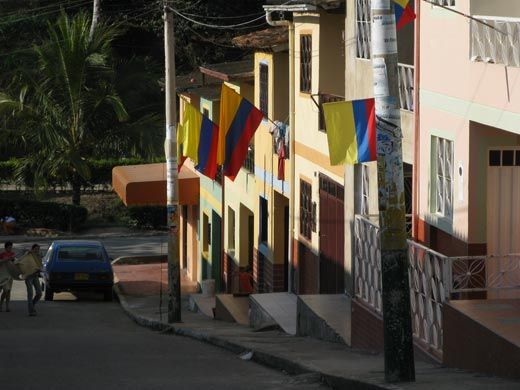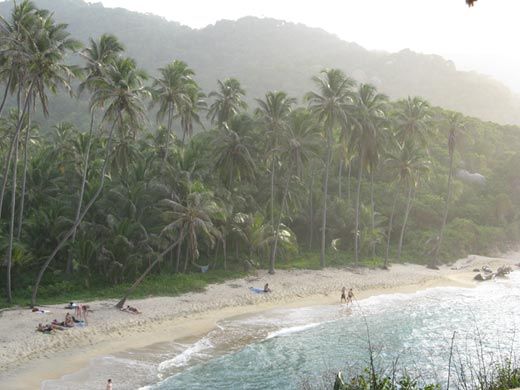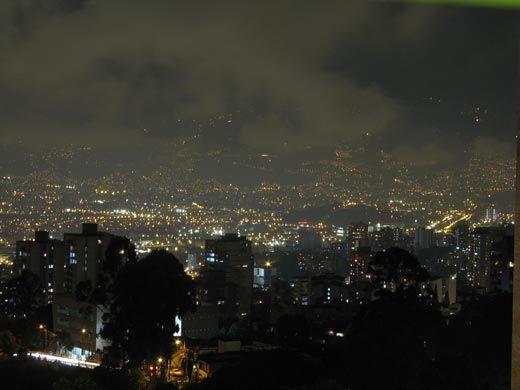Colombia Dispatch 1: Revisiting Colombia
Journalist Kenneth Fletcher returns to Colombia to investigate how the government and its people hope to rise above their problematic past
/https://tf-cmsv2-smithsonianmag-media.s3.amazonaws.com/filer/colombiaintro_631.jpg)
Back in 2006, after I had quit my job teaching high school, I went on vacation to Ecuador and on a whim, decided to take the bus north, curious about a country I had heard about often but understood little. I arrived in a Colombian village on a large mountain lake, where blooming flowers and soldiers toting enormous guns surrounded quaint alpine-style houses.
The village on La Cocha, as the lake is called, was not under siege. The military presence assured that Colombian day-trippers felt safe spending a sunny afternoon on the water, though there were only a handful of tourists that day. The area surrounding the lake was the site of guerrilla activity and drug trafficking; billboards along the roads encouraged passers-by to call an anonymous tip line with information on heroin and morphine labs.
Like most visitors to La Cocha, I paid a few pesos for a ride to a small island in one of the small, colorful motorboats that dotted the shore. I had only three days in Colombia before I returned to Quito to catch my flight to Washington. But I always wanted to return. Every Colombian I met said I hadn't really seen their country, and that there was much more to their homeland than the drug-filled, violent stereotype. Colombia ranges from cosmopolitan cities to centuries-old colonial ports, snowy mountain peaks to dense Amazonian jungle.
Colombia is the strongest U.S. ally in South America, and one of the biggest recipients of U.S. aid in the world. It's hard to sum up Colombia's long-running conflict; it's a complex situation with many sides. The fighting can be traced back at least to the assassination of the mayor of Colombia's capital city, Bogota, in 1948, which sparked clashes between liberals and conservatives for the next decade. In the 1960s, leftist guerrilla insurgencies began fighting for Marxist ideals, and over the years they ended up controlling much of the country through violence, extortion, kidnapping and the drug trade.
Right-wing paramilitary groups formed in self-defense against the guerrillas in regions beyond the government's control and soon became known for violent tactics, involvement in the drug trade, and massacres of civilians. But these groups are now waning in strength, and the government claims that peace could be within reach.
In recent years, tens of thousands of paramilitaries and guerrillas have disbanded after pressure from the government. The largest guerrilla group, the FARC, has been dealt a series of blows, including the military's rescue of high-profile hostages this summer. Kidnappings and murders in Colombia have fallen sharply since President Alvaro Uribe took office in 2002, and much of the country is remarkably safe when compared to a decade ago—reported kidnappings dropped from 1,709 in 2002 to 226 in 2007 and homicides fell from 23,523 to 17,198 in the same time frame.
While Uribe enjoys enormously high approval ratings, there are still many critics of his hard-line military tactics. Human rights groups argue that the military routinely kills civilians and presents them as guerillas. Uribe fired 27 soldiers and officers this October for possible involvement in such killings. And Colombia still remains by far the world's largest producer and exporter of cocaine, something the billions of dollars of U.S. aid funneled to drug eradication programs through Plan Colombia have failed to dent significantly.
I returned to Colombia for six weeks this summer to get to know the diverse cultures of Colombia and speak with the people working hard to improve their country. I visited rural villages where transplanted African traditions thrive and large cities where development projects transformed once-deadly slums. My regular dispatches for Smithsonian.com will tell their stories.
Planning Your Next Trip?
Explore great travel deals
Smithsonian magazine participates in affiliate link advertising programs. If you purchase an item through these links, we receive a commission.


